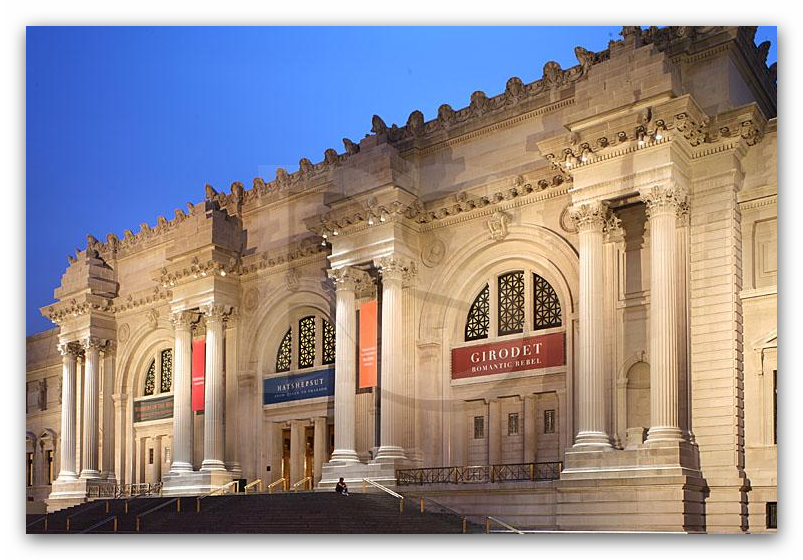Aug 22 2016 - Nov 28 2016
New York City, NY
This exhibition features several works depicting the brilliant writer, inventor, politician, patriot, and statesman Benjamin Franklin (1706–1790), who has been the subject of hundreds of portraits. The most famous of these was painted by Joseph Siffred Duplessis (1725–1802), Louis XVI's official portraitist, after Franklin arrived in Paris in 1776 to seek French support for the American war of independence. Portraying Franklin in a red coat with a fur collar and with an astonishingly elaborate frame decorated with his attributes, the oval painting was greatly admired and Duplessis exhibited it at the 1779 Paris Salon.
The painting, which has been in The Met collection for 85 years, is a focal point of the exhibition, along with the preliminary pastel portrait of Franklin, a life study by Duplessis. The pastel, which is rarely exhibited and is on loan from the New York Public Library, shows Franklin in the same pose as the painting but wearing a gray, collarless jacket and waistcoat. The image will be familiar to many: it is the likeness that is replicated on the one-hundred-dollar bill. The installation also explores the processes of image transfer and replication in the 18th century.
Franklin arrived in Paris on December 21, 1776, as a commissioner of the American Continental Congress, and lived in nearby Passy until he returned to America in 1785. He promoted the treaty of alliance between the fledgling nation and the government of Louis XVI that was signed on February 6, 1778. The American Revolutionary War was an enormously popular cause in France, where the elderly statesman's simplicity of dress and manner were admired. The "Fur Collar Portrait," or "VIR Portrait," by Duplessis was commissioned by the entrepreneur Jacques Donatien Le Ray de Chaumont. The oval canvas, exhibited in the frame in which it is still displayed, became the object of extravagant praise. Versions from the artist's workshop and by other hands were in demand and the portrait was replicated dozens of times. A fine replica by or after Duplessis, also belonging to The Met, is so close in design that the contours must have been transferred from the 1778 picture.
Franklin understood the importance of circulating his image and gave sittings to some half-dozen French artists, but he did not enjoy doing so. He did not wish to sit for the same painter twice, sending away in later years those who applied to him for an original and suggesting that they instead commission a copy. An X-radiograph of the "Fur Collar Portrait" reveals that Franklin's coat was originally much simpler, with small buttons and a narrow collar. In this connection, the exhibition draws attention to the Duplessis pastel portrait of Franklin that was given to the New York Public Library in 1896. For more than a century, the pastel has been conscientiously protected from damage due to overexposure to light and has thus rarely been exhibited. The pastel had been assigned to the early 1780s, but technical examination reveals that it dates to 1777 or early 1778 and is preliminary to the "Fur Collar Portrait;" its design precisely matches the composition revealed in the painting's X-radiograph. Pastel is a portable medium, and Duplessis probably took his pastel crayons to Passy to set down the direct likeness of Franklin.
Credit: Exhibition overview from museum website.
Exhibition Venues & Dates
Aug 22 2016 - Nov 28 2016
New York City, NY
